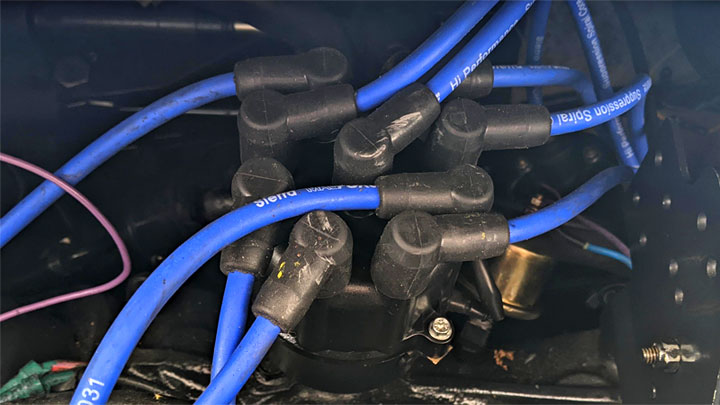4 Symptoms of a Bad Spark Plug Wire
Spark plug wires conduct ignition energy to fire the cylinders. But your engine’s spark plug wires are subject to significant thermal and electrical stress, making them prone to failure.
Learn about the most common warning signs of a bad spark plug wire, its typical lifespan, how much it costs to replace it, and whether “high performance” spark plug wires are worth using.
Symptoms of a Faulty Spark Plug Wire
When one or more spark plug wires are faulty, they are often accompanied by a number of secondary symptoms. Recognizing these symptoms can prove invaluable when trying to resolve the situation at hand and quickly return your vehicle to proper operating condition. Below are some of the most common symptoms associated with faulty ignition wires.
1) Rough Idle
One of the most common symptoms of a faulty ignition cable is a rough, erratic, and unstable idle. This is often felt while standing at a traffic light, and the vehicle feels like it is leaning slightly.
This poor idle is the result of a relative imbalance between each cylinder.
2) Misfire
Another symptom of a faulty spark plug wire is a noticeable misfire in at least one cylinder. This condition is often especially noticeable under heavy throttle application and may be perceived as hesitation or a noticeable loss of power.
A misfiring engine also tends to make an audible noise called jerking when under load.
3) Misfire
In some cases, faulty spark plug wires can cause misfires due to incomplete or inefficient combustion. These misfires are usually accompanied by some hesitation or loss of power when the engine is under load.
4) Check Engine Light
Most often, misfires caused by faulty spark plug wires are detected by the vehicle’s Engine Control Module (ECM). When this occurs, a corresponding misfire code will be logged and the vehicle’s check engine light will be illuminated.
Fortunately, misfire DTCs can be traced back to a specific cylinder, which can be very helpful in diagnosis. Common misfire codes are P0300, P0301, P0302, P0303, P0304, etc.
What do spark plug wires do?
Spark plug wires carry a medium-high electrical current from their entry point on the engine’s distributor cap to their termination point at the spark plug. Engines with a standard distributor-controlled ignition system use one spark plug wire for each cylinder.
Energy delivered through the engine’s ignition wires comes from an ignition coil and is transferred to the vehicle’s distributor cap. The engine’s distributor is timed to match the engine’s firing order and releases the input energy through specific connection points driven by a rotating rotor knob and a series of cylinder-specific contacts.
Energy is released through each spark plug wire and eventually reaches the spark plug at the end of each wire. This energy is dissipated as an arc forms between the spark plug’s center electrode and the side or ground electrode. The resulting arc is therefore responsible for igniting the volatile air-fuel mixture in each combustion chamber.
Do all vehicles have spark plug wires?
All gasoline-powered internal combustion engines rely on a spark as their ignition source and are equipped with head-mounted spark plugs. However, not all spark plugs require the use of spark plug wires.
This may seem somewhat contradictory, but to understand this better, one only needs to look at the modern ignition coil systems found in many of today’s vehicles. Over the past few decades, many automakers have begun using ignition coil assemblies instead of traditional distributor-controlled ignition systems.
This type of system does not have a standard distributor or spark plug wires, but instead uses individual cylinder-specific coils that are attached directly to the spark plugs via a uniform boot.

